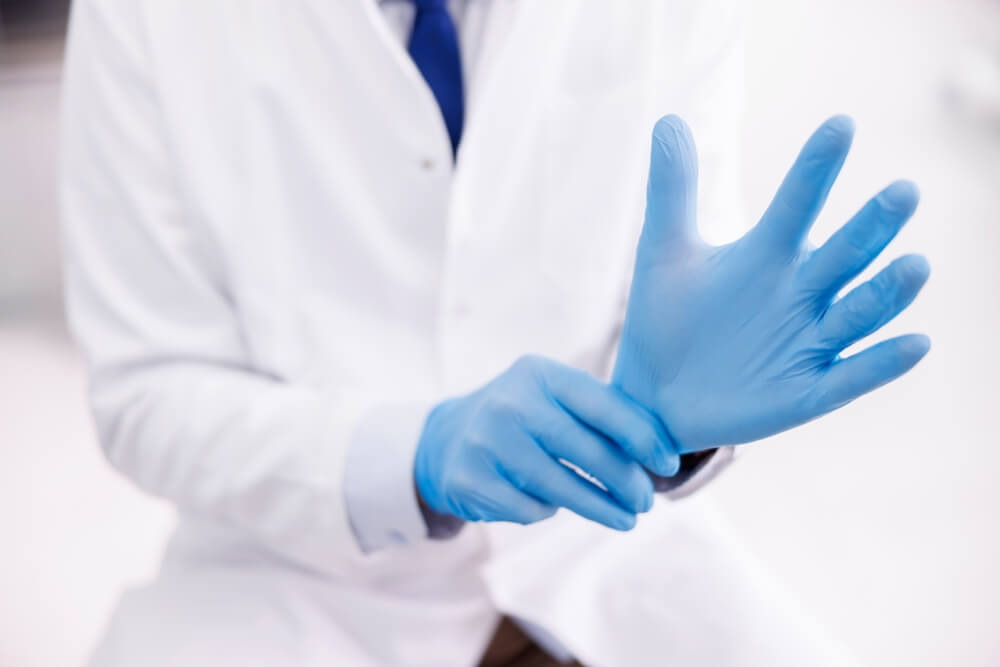What is an Inguinal Hernia
As you may already be aware, hernias occur when weakened structures within the body cavity, such as weak muscle walls and cavity openings, allow internal tissues to protrude. Among these hernia types, inguinal hernias are the most prevalent. They occur when tissues, such as intestines or abdominal fat, bulge through the lower abdominal wall, which acts as a barrier between the groin and abdomen.
In this informative piece, Dr. Omar Rashid and his team of experts will delve into the symptoms of inguinal hernias and the potential complications they can cause. Furthermore, they will explore the advantages associated with the latest advancements in the treatment of inguinal hernias.
About Inguinal Hernias
As the name implies, inguinal hernias develop in the inguinal canal, or the passageway running on either side of the pelvis into the sex organ. Because of this, they are also often simply called groin hernias.
Typically, there are two main types of inguinal hernias:
- Direct inguinal hernias, which directly penetrate through the wall of the inguinal canal, typically occur in adults, developing slowly due to chronic pressure on the muscle wall and the weakening of abdominal muscles.
- Indirect inguinal hernias usually enter the inguinal canal through the top. They are usually a result of a congenital disability.
Inguinal hernias are at least ten times more common in men, primarily for anatomic reasons. The male testicle begins just above the lower abdominal wall, descending through the inguinal canal into the scrotum, and the place where the testicle passes can be susceptible to hernia, as it is an already present opening.
Inguinal hernias are also relatively common, accounting for about 75% of all hernias. For the most part, they aren’t always serious, but if left untreated, they can lead to severe complications. All hernias tend to worsen over time, meaning that eventually, more tissue can push through. And the more tissue gets into the inguinal canal, it can become trapped, causing pain and potentially dangerous. For instance, a piece of intestine trapped can become blocked or pinched, or become cut off from the body’s blood supply.

Causes and Inguinal Hernia Symptoms
The primary cause of inguinal hernia is a weakness or opening in the lower abdominal wall, which allows abdominal tissue to protrude. Several factors can contribute to this condition, such as:
- Congenital factors: Some individuals may have an inherent opening or weak spot in the abdominal wall present from birth.
- Connective tissue differences: Congenital variances in the strength of connective tissue, particularly collagen, can make individuals more susceptible to developing inguinal hernias.
- Previous abdominal surgery: An opening or weak spot can result from previous surgical procedures in the abdominal area, increasing the risk of hernia formation.
- Chronic coughing or sneezing: Persistent and forceful coughing or sneezing can exert pressure on the lower abdominal wall, potentially leading to the development of a hernia.
- Straining during urination or bowel movements: Frequent and prolonged straining while urinating or passing stool can strain the abdominal muscles, potentially causing a hernia.
- Strenuous physical activity or manual labor: Engaging in activities that involve repetitive or intense exertion of the abdominal muscles, such as heavy lifting or strenuous exercise, can contribute to hernia formation.
- Pregnancy and childcare: The strain exerted on the abdominal muscles during pregnancy, and the physical demands of carrying and lifting small children can increase the risk of developing an inguinal hernia, particularly in women.
- Prolonged standing: Occupations that require prolonged periods of standing can place continuous pressure on the lower abdomen, potentially contributing to hernia development.
- Chronic obesity: Excessive weight and intra-abdominal pressure associated with chronic obesity can weaken the abdominal wall and contribute to the formation of hernias.
- Age-related tissue degeneration: Normal aging processes can lead to the degeneration of tissues, including the weakening of the abdominal wall, making older individuals more prone to inguinal hernias.
When discussing inguinal hernia symptoms, it’s essential to note that not all hernias will produce signs. Or the symptoms may come and go. The hernia may slide out of and into the opening, often when performing specific activities. Children have a palpable lump on the groin area that looks bigger when they cry and fully subsides when they’re sleeping.
Patients may notice the following:
- A bulge in the groin area may be on either side of the pubic bone, labia, or scrotum.
- Groin pain during certain activities, like lifting, straining, bending over, or coughing.
- Pinching or burning sensations that can radiate through the pelvis to your legs.
Complications
Possible complications of an inguinal hernia include:
Enlargement: Over time, the pressure exerted by the hernia on weakened tissues can cause it to grow larger, potentially leading to increased discomfort.
Incarceration: An incarcerated hernia cannot be manually pushed back into place. As the hernia becomes trapped and continues to grow, it is more likely to become pinched, causing pain and potentially leading to further complications.
Small bowel obstruction: If a portion of the small intestine becomes herniated and gets trapped or pinched, it can result in a blockage.
Strangulation: A strangulated hernia occurs when the hernia is cut off from its blood supply. This can lead to inflammation, infection, and tissue death (gangrene). Strangulation of a hernia is a medical emergency and requires immediate attention.
Diagnosing Inguinal Hernias
Fortunately, simple physical exams are usually enough to establish a precise diagnosis. Still, if the doctor can’t properly diagnose the hernia manually, they might recommend using imaging tests such as an ultrasound or a CT scan.
Inguinal Hernia Treatment
In the case of children and most women, providers will recommend surgery, while in the case of men who have asymptomatic, small hernias, they might recommend a wait-and-watch approach. Still, they will also eventually need treatment.
For the most part, experts address the problem by using inguinal hernia repair surgery, which means moving the hernia contents back into the abdominal cavity and closing the gap.
Fortunately, most inguinal hernia repair surgeries can be done with minimally invasive techniques, but in more complicated cases, open surgery may be needed.
That said, surgeons will often opt for the following:
- Laparoscopic surgery: This is a minimally invasive method, with several small incisions in the abdomen. Through these incisions, surgeons will insert a thin tube with a video camera (the laparoscope). They will repair the hernia through these holes by inserting other medical instruments guided by the camera.
- Robotically assisted repair: This method also uses a laparoscope; however, the surgeon sits at a console and uses that to guide the surgical instruments.
- Open surgery: This is the traditional method, with one long cut along the pelvis that opens up the pelvic cavity.

Learn More
While most hernias aren’t immediately dangerous, they can lead to complications if not addressed medically in time. Fortunately, these conditions are relatively easy to diagnose and most often can be treated with minimally invasive procedures.
To that end, if you’d like to learn more about the robotically assisted laparoscopic inguinal hernia repair surgery Dr. Omar Rashid performs, feel free to contact us and schedule an appointment with him. His experts also perform a natural repair without synthetic mesh, which can reduce the recurrence of the hernia.


